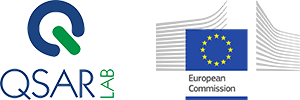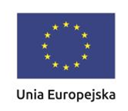Publikacje
Kowalska D., Sosnowska A., Zdybel S., Stępnik M., Puzyn T. (2024): Predicting bioconcentration factors (BCFs) for per- and polyfluoroalkyl substances (PFAS), Chemosphere 364 , 143146, IF: 8,1, link
Tal T, Myhre O, Fritsche E, Rüegg J, Craenen K, Aiello-Holden K, Agrillo C, Babin PJ, Escher BI, Dirven H, Hellsten K, Dolva K, Hessel E, Heusinkveld HJ, Hadzhiev Y, Hurem S, Jagiello K, Judzinska B, Klüver N, Knoll-Gellida A, Kühne BA, Leist M, Lislien M, Lyche JL, Müller F, Colbourne JK, Neuhaus W, Pallocca G, Seeger B, Scharkin I, Scholz S, Spjuth O, Torres-Ruiz M and Bartmann K (2024): New approach methods to assess developmental and adult neurotoxicity for regulatory use: a PARC work package 5 project. Front. Toxicol. 6:1359507, IF: 8,06, link
Jeliazkova, N., Longhin, E., Yamani, N., Rundén-Pran, E., Moschini, E., Serchi, T., Vinković Vrček, I., Burgum, M.J., Doak, S.H., Cimpan, M.R., Rios-Mondragon, I., Cimpan, E., Battistelli, C.L., Bossa, C., Tsekovska, R., Drobne, D., Novak, S., Repar, N., Ammar, A., Nymark, P., Di Battista, V., Sosnowska, A., Puzyn, T., Kochev, N., Iliev, L., Jeliazkov, V., Reilly, K., Lynch, I., Bakker, M., del Pivo, C., Sánchez Jiménez, A., Godinho Fonseca, S., Manier, N., Luisa Fernandez-Cruz, M., Rashid, S., Willighagen, E., Apostolova, M.D., Dusinska, M. (2024): A template wizard for the cocreation of machine-readable data-reporting to harmonize the evaluation of (nano)materials, Nature Protocols, IF: 14,8, link
Woziński, M., Greber, Katarzyna E., Pastewska, M., Kolasiński, P., Hewelt-Belka, W., Żołnowska, B., Sławiński, J., Szulczyk, D.,Sawicki W.,Ciura, K. (2024): Modification of gradient HPLC method for determination of small molecules' affinity to human serum albumin under column safety conditions: Robustness and chemometrics study, Journal of Pharmaceutical and Biomedical Analysis, 239, 115916, IF: 3,4, link
Ciura, K., Moschini, E., Stępnik, M., Serchi, T., Gutleb, A., Jarzyńska, K., Jagiello K., Puzyn, T. (2024): Toward Nano-Specific In Silico NAMs: How to Adjust Nano-QSAR to the Recent Advancements of Nanotoxicology?, Small, 20, 2305581, IF: 13,3, link
Ciura K. (2024): Modeling of small molecule's affinity to phospholipids using IAM-HPLC and QSRR approach enhanced by similarity-based machine algorithms, Journal of Chromatography A, 1714, 464549, IF: 4,1, link
Godlewska K., Białk-Bielińska A., Mazierski P., Zdybel Sz, Sosnowska A., Górzyński D., Puzyn T., Zaleska-Medynska A., Klimczuk T., Paszkiewicz M. (2024): Assessment of the application of selected metal-organic frameworks as advanced sorbents in passive extraction used in the monitoring of contaminants of emerging concern in surface waters, STOTEN, 927, 172215, IF: 9,8, link
Mudlaff M., Sosnowska A., Gorb L., Bulawska N., Jagiello K., Puzyn T., (2024): Environmental impact of PFAS: Filling data gaps using theoretical quantum
chemistry and QSPR modeling, Envoronmental International, 185 108568, IF: 11,8 link
Zdybel Sz., Sosnowska A., Kowalska D., Sommer J., Conrady B., Gromelski M., Puzyn T. (2024): Hybrid machine learning and experimental studies of antiviral potential of ionic liquids against P100, MS2, and Phi6, Journal of Chemical Information and Modeling, IF: 5,6, link
Mikolajczyk, A., Wyrzykowska, E., Mazierski, P., Grzyb, T., Wei, Z., Kowalska, E., Caicedo, P.N.A., Zaleska-Medynska, A., Puzyn, T., Nadolna, J. (2024): Visible-light photocatalytic activity of rare-earth-metal-doped TiO2: Experimental analysis and machine learning for virtual design. Applied Catalysis B: Environment and Energy, IF: 22,1, link
Battista, V. D., Sanchez-Lievanos, K. R., Jeliazkova, N., Murphy, F., Tsiliki, G., Zabeo, A., Gajewicz-Skretna, A., Mikołajczyk, A., Hristozov, D., Stone, V., Schmid, O., Hunt, N., Oomen, A. G. & Wohlleben, W. (2024): Similarity of multicomponent nanomaterials in a safer-by-design context : the case of core–shell quantum dots. Environ. Sci.: Nano (2024), IF: 7,3, link
Furxhi I., Kalapus M., Costa A. Puzyn T. Artificial augmented dataset for the enhancement of nano-QSARs models. A methodology based on topological projections, Nanotoxicology, 17:6-7, 529-544 (2023) IF: 5,2, link
Szulczyk, D., Woziński, M., Koliński, M., Kmiecik, S., Głogowska, A., Augustynowicz-Kopeć, E., Dobrowolski, M., Roszkowski, P., Struga, M., Ciura, K., (2023): Menthol- and thymol-based ciprofloxacin derivatives against Mycobacterium tuberculosis: in vitro activity, lipophilicity, and computational studies, Scientific Reports, IF: 4,6, link
Fedorowicz, J., D. Cruz, C., Morawska, M., Ciura, K., Gilbert-Girard, S., Mazur, L., Mäkkylä, H., Ilina, P., Savijoki, K., Fallarero, A., Tammela, P., Sączewski, J.,. (2023). Antibacterial and antibiofilm activity of permanently ionized quaternary ammonium fluoroquinolones, European Journal of Medicinal Chemistry, IF: 6,7, link
Ciura, K., Fryca, I., Gromelski, M.,.(2023). Prediction of the retention factor in cetyltrimethylammonium bromide modified micellar electrokinetic chromatography using a machine learning approach Author links open overlay panel, Microchemical journal, IF: 4,8, link
Mikolajczyk A., Zhdan U., Antoniotti S., Smolinski A., Jagiełło K., Skurski P., Harb M., Puzyn T., Polanski J. (2023). Retrosynthesis from transforms to predictive sustainable chemistry and nanotechnology: a brief tutorial review, Green Chemistry,25, 2971-2991, IF[2023] = 9.8, MNiSW = 200, link
Sengottiyan S., Mikolajczyk A., Jagiełło K., Swirog M., Puzyn T. (2023). Core, Coating, or Corona? The Importance of Considering Protein Coronas in nano-QSPR Modeling of Zeta Potential, ACS Nano, 17, 3, 1989–1997, IF[2023] = 18,027, MNiSW = 200, link
Sengottiyan S., Mikolajczyk A., Puzyn T. (2023). How Does the Study MD of pH-Dependent Exposure of Nanoparticles Affect Cellular Uptake of Anticancer Drugs?, Int. J. Mol. Sci. 24(4), 3479, IF[2023] = 5,6, MNiSW = 140, link
Mancardi G., Mikolajczyk A., Annapoorani V. K., Bahl A., Blekos K., Burk J., Çetin Y. A. , Chairetakis K., Dutta S., Escorihuela L., Jagiello K., Singhal A., van der Pol R., Bañares M. A., Buchete N.-V., Calatayud M., Dumit V. I., Gardini D., Jeliazkova N., Haase A., Marcoulaki E., Martorell B., Puzyn T., Sevink GJ A. , Simeone F. C., Tämm K., Chiavazzo E. (2023). A computational view on nanomaterial intrinsic and extrinsic features for nanosafety and sustainability, Materials Today, corrected proof, IF[2023] = 24,2, MNiSW = 200, link
Kozlowska, L., Jagiello, K., Ciura, K., Sosnowska, A., Zwiech, R., Zbrog, Z., Wasowicz, W., Gromadzinska, J., (2023). The Effects of Two Kinds of Dietary Interventions on Serum Metabolic Profiles in Haemodialysis Patients, Biomolecules 13(5), 854; IF: 6,064 link
G. del Giudice, A. Serra, L. A. Saarimäki, K. Kotsis, I. Rouse, S. A. Colibaba, K. Jagiello, A. Mikolajczyk, M. Fratello, A. G. Papadiamantis, N. Sanabria, M. E. Annala, J. Morikka, P. A. S. Kinaret, E. Voyiatzis, G. Melagraki, A. Afantitis, K. Tämm, T. Puzyn, M. Gulumian, V. Lobaskin, I. Lynch, A. Federico & D. Greco An ancestral molecular response to nanomaterial particulates, Nature Nanotechnology, IF: 40,523, link
Sosnowska A., Bulawska N., Kowalska D., Puzyn, T., (2023) Towards higher scientific validity and regulatory acceptance of predictive models for PFAS, Green Chemistry, 25, 1261-1275, IF:9,8, link
Kowalska D., Sosnowska A., Bulawska N., Stepnik M., Besselink H., Behnisch P., Puzyn., (2023) How the Structure of Per- and Polyfluoroalkyl Substances (PFAS) Influences Their Binding Potency to the Peroxisome Proliferator-Activated and Thyroid Hormone Receptors—An In Silico Screening Study, Molecules, IF: 4,927, link
Hovorun M. D.., Voiteshenko S. I., Gorb L., (2023). Manifestations of intramolecular H-bonds of CH… O and OH… C type in quercetin molecule: Analysis of IR spectra by mean of density functional theory, Spectrochimica Acta Part A: Molecular and Biomolecular Spectroscopy, Volume 287, Part, IF: 4,83, link
Mikolajczyk, A., Falkowski, D. (2022).One Step before Synthesis: Structure–Property–Condition Relationship Models to Sustainable Design of Efficient TiO2-Based Multicomponent Nanomaterials." International Journal of Molecular Sciences 23.21 (2022): 13196. APA, IF: 5,6, link
Swirog, M., Mikolajczyk, A., Jagiello, K., Jänes, J., Tämm, K., & Puzyn, T. (2022). Predicting electrophoretic mobility of TiO2, ZnO, and CeO2 nanoparticles in natural waters: The importance of environment descriptors in nanoinformatics models. Science of The Total Environment, 840, 156572. IF: 9,8, link
Wyrzykowska, E., Mikolajczyk, A., Lynch, I. et al. (2022) Representing and describing nanomaterials in predictive nanoinformatics. Nat. Nanotechnol. 17, 924–932, IF: 40,523, link
Parnicka, P., Lisowski, W., Klimczuk, T., Mikolajczyk, A., & Zaleska-Medynska, A. (2022). A novel (Ti/Ce) UiO-X MOFs@ TiO2 heterojunction for enhanced photocatalytic performance: Boosting via Ce4+/Ce3+ and Ti4+/Ti3+ redox mediators. Applied Catalysis B: Environmental, 310, 121349, IF: 22,1, link
Miodyńska, M., Mikolajczyk, A., Mazierski, P., Klimczuk, T., Lisowski, W., Trykowski, G., & Zaleska-Medynska, A. (2022). Lead-free bismuth-based perovskites coupled with g–C3N4: A machine learning based novel approach for visible light induced degradation of pollutants. Applied Surface Science, 588, 152921., IF: 6,7, link
Sengottiyan, S., Malakar, K., Kathiravan, A., Velusamy, M., Mikolajczyk, A., & Puzyn, T. (2022). Integrated Approach to Interaction Studies of Pyrene Derivatives with Bovine Serum Albumin: Insights from Theory and Experiment. The Journal of Physical Chemistry B., IF: 2,9, link
El Yamani, N., Mariussen, E., Gromelski, M., Wyrzykowska, E., Grabarek, D., Puzyn, T., Tanasescu, S., Dusinska, M., Rundén-Pran E., (2022): Hazard identification of nanomaterials: In silico unraveling of descriptors for cytotoxicity and genotoxicity, NanoToday, IF: 20,72, link
Pastewska, M., Żołnowska, B., Kovačević, S., Kapica, H., Gromelski, M., Stoliński, F., ... & Ciura, K. (2022). Modeling of Anticancer Sulfonamide Derivatives Lipophilicity by Chemometric and Quantitative Structure-Retention Relationships Approaches. Molecules, 27(13), 3965. IF: 4,927, MNiSW =140, link
Kozłowska, L.; Santonen, T.; Duca, R.C.; Godderis, L.; Jagiello, K.; Janasik, B.; Van Nieuwenhuyse, A.; Poels, K.; Puzyn, T.; Scheepers, P.T.J.; Sijko, M.; Silva, M.J.; Sosnowska, A.; Viegas, S.; Verdonck, J.; Wąsowicz, W.; on behalf of HBM4EU Chromates Study Team; on behalf of Statistical Team. (2022) HBM4EU Chromates Study: Urinary Metabolomics Study of Workers Exposed to Hexavalent Chromium, Metabolites, IF: 4,823, MNiSW =100, link
Stoliński, F., Rybińska-Fryca, A., Gromelski, M., Mikolajczyk, A., & Puzyn, T. (2022). NanoMixHamster: a web-based tool for predicting cytotoxicity of TiO2-based multicomponent nanomaterials toward Chinese hamster ovary (CHO-K1) cells. Nanotoxicology, 16(3), 276-289. IF: 6,612, MNiSW =140, link
Stoliński, F., Gromelski, M., Jagiello, K., Rybińska-Fryca, A., Williams, A., Halappanavar, S., Vogel, U., Puzyn, T., (2022): AOP173 Key Event associated Pathway Predictor – Online application for the prediction of benchmark dose lower bound (BMDLs) of a transcriptomic pathway involved in MWCNTs-induced lung fibrosis, Nanotoxicology, IF: 6,612, MNiSW =140, link
Jagiello, K., Judzińska, B, Sosnowska, A., Lynch, I., Halappanavar, S., Puzyn, T. (2022): Using AOP-Wiki to support the ecotoxicological risk assessment of nanomaterials: first steps in the development of novel Adverse Outcome Pathways, Environmental Science: Nano, IF: 8,131, MNiSW =140, link
Jagiello, K.; Ciura, K (2022): In Vitro to in vivo extrapolation to support developing Next Generation Risk Assessment (NGRA) strategy for nanomaterials, Nanoscale,IF: 7,79, MNiSW =140 link
Murugadoss S. Vinkovic Vrcek I., Pem B., Jagiello K., Judzinska B., Sosnowska A., Martens A., Willighagen E.L., Puzyn., Dusinska M., Cimpan M.R., Fessard V., Hoet P.H., (2021) A strategy towards the generation of testable adverse outcome pathways for nanomaterials, ALTEX - Alternatives to animal experimentation. IF: 5,787, MNiSW =100 link
Sizochenko N., Mikolajczyk A., Syzochenko M., Puzyn T., Leszczynski J. Zeta potentials (ζ) of metal oxide nanoparticles: A meta-analysis of experimental data and a predictive neural networks modeling, NanoImpact, Volume 22, 2021, 100317, IF[2023] = 4,9, MNiSW = 100, link
Ciura K., Ptaszyńska N., Kapica H., Pastewska M., Łęgowska A., Rolka K., Kamysz W., Sawicki W., Greber E., (2020) Can Immobilized Artificial Membrane Chromatography Support the Characterization of Antimicrobial Peptide Origin Derivatives? Antibiotics ,10, 1237 IF [2019] = 4.639, MNiSW = 70, link
Ciura K., Kovaćević S., Pastewska M., Kapica H., Kornela M., Sawicki W. (2020) Prediction of the chromatographic hydrophobicity index with immobilized artificial membrane chromatography using simple molecular descriptors and artificial neural networks Journal of Chromatography A 1660, ID: 462666 IF [2019] = 4.759, MNiSW = 100, link
Kinaret P.A.S, Serra A., Federico A., Kohonen P., Nymark P., Liampa I.,Ha M.K., Choi J-S., Jagiello K.,Sanabria N., Melagraki G., Cattelani L., Fratello M., Sarimveis H., Afantitis A.,Yoon T-H., Gulumian M., Grafström R., Puzyn T., Greco D. (2020): Transcriptomics in Toxicogenomics, Part I: Experimental Design, Technologies, Publicly Available Data, Regulatory Aspects. Nanomaterials, 10(4), 750. IF: 4.034, link
Federico, A.; Serra, A.; Ha, M.K.; Kohonen, P.; Choi, J.-S.; Liampa, I.; Nymark, P.; Sanabria, N.; Cattelani, L.; Fratello, M.; Kinaret, P.A.S.; Jagiello, K.; Puzyn, T.; Melagraki, G.; Gulumian, M.; Afantitis, A.; Sarimveis, H.; Yoon, T.-H.; Grafström, R.; Greco, D., (2020): Transcriptomics in Toxicogenomics, Part II: Preprocessing and Differential Expression Analysis for High Quality Data, Nanomaterials, 10(5), 903, link.
Serra, A.; Fratello, M.; Cattelani, L.; Liampa, I.; Melagraki, G.; Kohonen, P.; Nymark, P.; Federico, A.; Kinaret, P.A.S.; Jagiello, K.; Ha, M.K.; Choi, J.-S.; Sanabria, N.; Gulumian, M.; Puzyn, T.; Yoon, T.-H.; Sarimveis, H.; Grafström, R.; Afantitis, A.; Greco, D., (2020): Transcriptomics in Toxicogenomics, Part III: Data Modelling for Risk Assessment. Nanomaterials, 10(4), 708, link
Jagiello K., Halappanavar S., Rybinska-Fryca A., Williams A., Vogel U., Puzyn T. (2020): Transcriptomic-based and AOP-informed structure-activity relationships to predict pulmonary pathology induced by multiwalled caron nanotubes, Small link
Isigonis P., Afantitis A., Antunes D., Bartonova A., Beitollahi A., Bohmer N., Bouman E., Chaudhry Q., Cimpan M.R., Cimpan E., Doak S., Dupin D., Fedrigo D., Fessard V., Gromelski M., Gutleb A.C., Halappanavar S., Hoet P., Jeliazkova N., Jomini S., Lindner S., Linkov I., Longhin E.M., Lynch I., Malsch I., Marcomini A., de la Fuente J.M., Melagraki G., Murphy F., Neaves M., Packroff R., Pfuhler S., Puzyn T., Rahman Q., Semenzin E., Serchi T., Steinbach Ch., Trump B., Vinković Vrček I., Warheit D., Wiesner M.R., Willighagen E., Dusinska M.. (2020): RiskGONE and NanoSolveIT Project: Risk governance of emerging technologies demonstrated in terms of its applicability to nanomaterials. Nanomaterials, link
Rybińska-Fryca A., Mikolajczyk A., Puzyn T. (2020): Structure–activity prediction networks (SAPNets): a step beyond Nano-QSAR for effective implementation of the safe-by-design concept. Nanoscale, link
Wyrzykowska E., Jagiełło K., Rasulev B., Puzyn T. (2020): Descriptors in nano-QSAR/QSPR modeling. In: Gajewicz A., Puzyn T.: Computational nanotoxicology: challenges and perspectives, 245–302, Jenny Stanford Publishing, Singapore. ISBN 9789814800648
Gajewicz A., Puzyn T.: (Eds.) Computational nanotoxicology: challenges and perspectives. 1st Edition, ISBN 9789814800648. Singapore: Jenny Stanford Publishing, 2020


